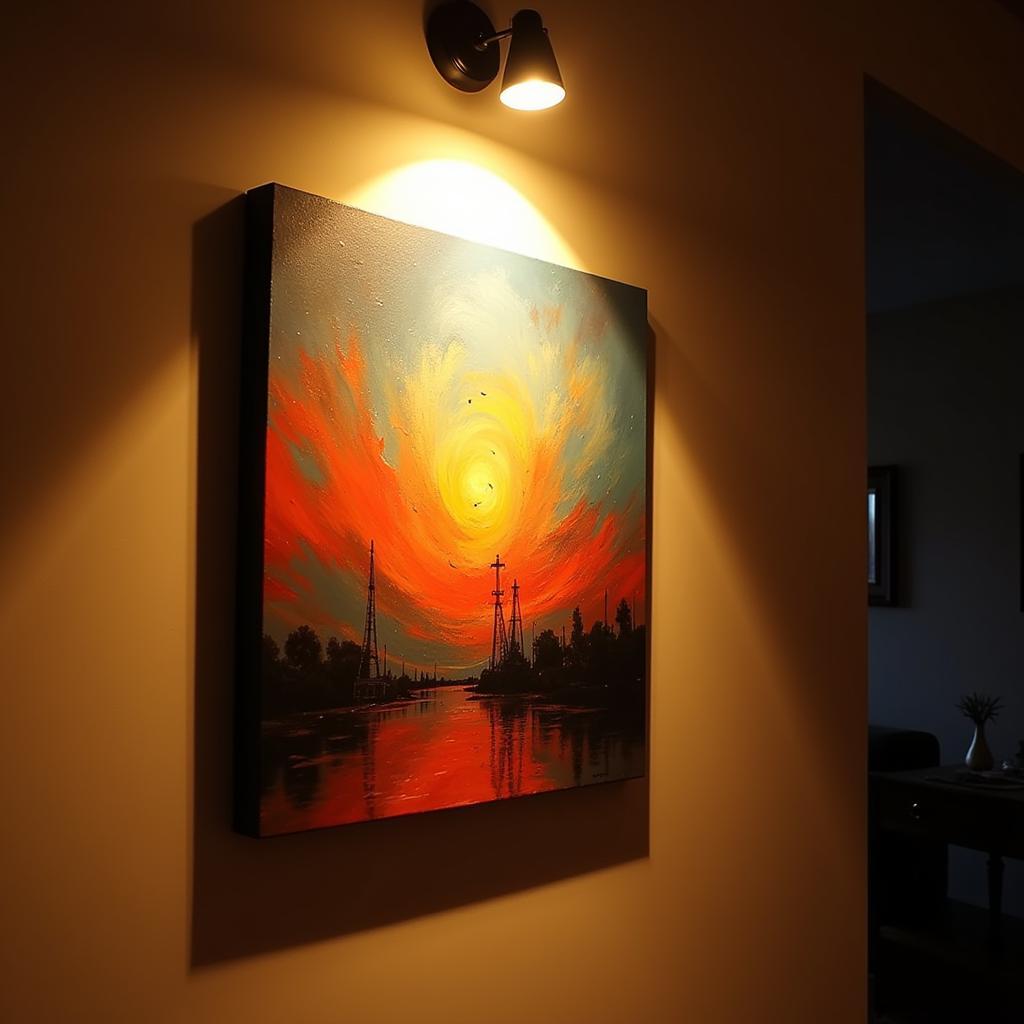Glass for Art: Unleash Your Creativity with This Versatile Medium
Glass, a material known for its transparency and fragility, might seem like an unlikely candidate for artistic expression. However, its unique properties have captivated artists for centuries, inspiring them to transform this everyday substance into breathtaking works of art. From stained glass windows illuminating grand cathedrals to delicate blown glass sculptures gracing modern galleries, Glass For Art offers endless creative possibilities.
The Allure of Glass in Art
What makes glass so alluring for artistic endeavors? The answer lies in its inherent duality. It can be both strong and delicate, transparent and opaque, reflecting light and color in mesmerizing ways. This versatility allows artists to experiment with a wide range of techniques, resulting in diverse and captivating art forms.
One of the most well-known uses of glass for art is stained glass. This ancient technique involves piecing together small pieces of colored glass using lead came, creating intricate designs that often depict religious scenes, historical events, or abstract patterns. Stained glass windows, in particular, have adorned sacred spaces for centuries, filtering light into breathtaking displays of color and symbolism.
Beyond the Window: Exploring Different Types of Glass Art
Beyond the traditional beauty of stained glass, the world of glass art encompasses a wide array of techniques and styles. Glassblowing, for example, involves shaping molten glass using a blowpipe, creating everything from delicate ornaments to large-scale installations. This highly skilled craft demands precision, timing, and a deep understanding of the material’s properties.
Another fascinating technique is glass fusing, where different pieces of glass are melted together in a kiln, fusing them into a single, cohesive piece. This technique allows artists to create intricate patterns, textures, and three-dimensional forms.
Other notable glass art forms include:
- Glass casting: Pouring molten glass into molds to create sculptures and other objects.
- Glass etching: Using acid or abrasive substances to create designs on the glass surface.
- Glass painting: Applying paints or enamels directly onto the glass.
Each technique offers a unique set of possibilities, encouraging artists to push the boundaries of what’s possible with this captivating material.
Choosing the Right Glass for Your Artistic Vision
With so many types of glass for art available, selecting the right one for your project is crucial. Factors to consider include:
- Transparency vs. Opacity: Do you want light to pass through your artwork, or are you aiming for a more solid, opaque effect?
- Color: Glass comes in a vast spectrum of colors, from vibrant hues to subtle shades. Consider the mood and message you want to convey.
- Texture: From smooth and glossy to rough and textured, the surface of the glass can dramatically impact the final look of your artwork.
- Workability: Some types of glass are easier to cut, shape, and fuse than others. Consider your skill level and the complexity of your project.
Tips for Beginners: Getting Started with Glass Art
Working with glass for art can seem daunting at first, but with the right guidance and safety precautions, it’s an incredibly rewarding pursuit. Here are some tips for beginners:
- Start with a beginner-friendly technique: Fusing and mosaic are good starting points, as they require less specialized equipment than glassblowing.
- Invest in essential tools: These might include glass cutters, safety glasses, gloves, and a dedicated work surface.
- Take a class or workshop: Learning from experienced artists is invaluable, especially when working with a potentially dangerous material like glass.
- Don’t be afraid to experiment: Glass is a forgiving medium, and mistakes can often be melted down and reworked. Embrace the process of discovery and allow yourself to make mistakes along the way.
Conclusion: Embark on Your Glass Art Journey
Whether you’re drawn to the intricate beauty of stained glass, the fluid forms of blown glass, or the endless possibilities of fused glass, the world of glass art awaits your exploration. With its unique properties and endless creative potential, glass offers a captivating medium for expressing your artistic vision and transforming ordinary material into extraordinary works of art. Let your creativity flow, experiment with different techniques, and discover the magic of working with glass.
FAQs
Q: Is glass art dangerous?
A: While glass can be dangerous if handled improperly, taking proper safety precautions can significantly minimize risks. Always wear safety glasses and gloves when working with glass, and be mindful of sharp edges.
Q: What is the best type of glass for beginners?
A: Float glass, a readily available and affordable option, is a good choice for beginners experimenting with fusing or mosaic.
Q: Where can I find glass art supplies?
A: Art supply stores, online retailers, and specialty glass studios often carry a wide range of glass art materials and tools.
Q: What are some resources for learning more about glass art?
A: Books, online tutorials, and workshops offered by experienced glass artists are excellent resources for expanding your knowledge and skills.
Q: How do I care for my glass art?
A: Dusting with a soft cloth is usually sufficient for cleaning. Avoid using harsh chemicals or abrasive cleaners, as they can damage the glass.
For further assistance, please contact us at Phone Number: 02462573573, Email: [email protected] or visit us at Savico Megamall, 7-9 Đ. Nguyễn Văn Linh, Gia Thụy, Long Biên, Hà Nội 10000, Việt Nam. Our customer service team is available 24/7 to assist you.



